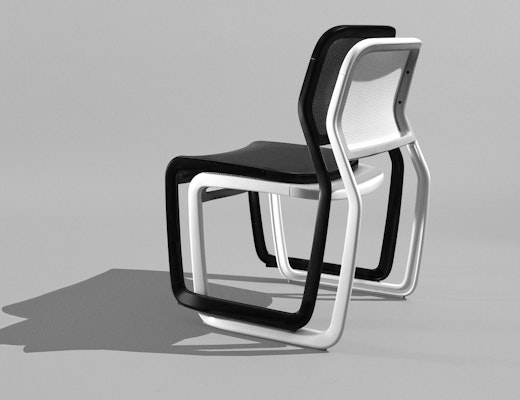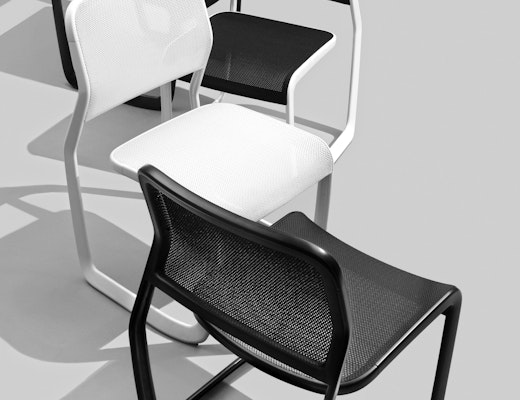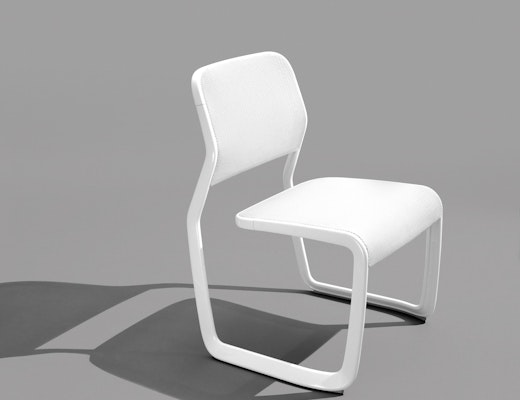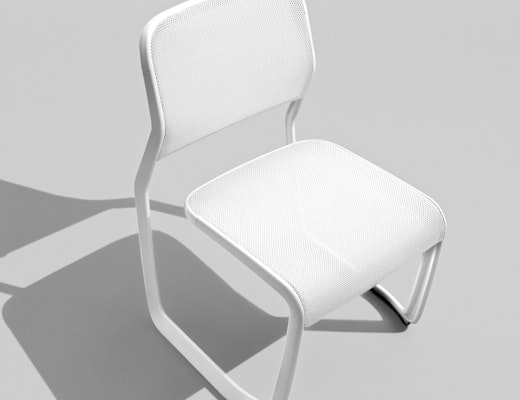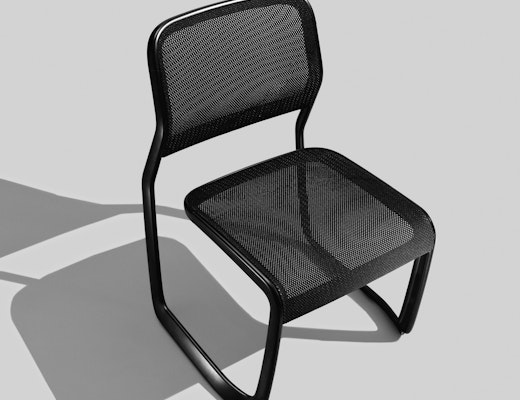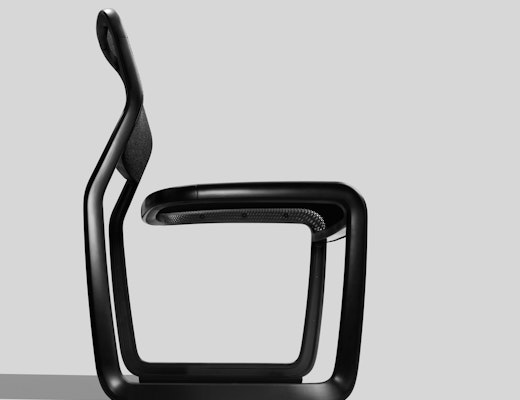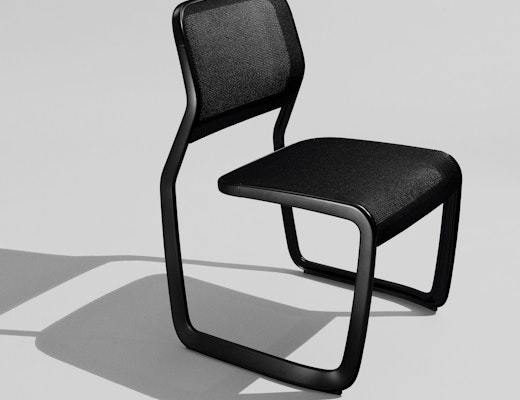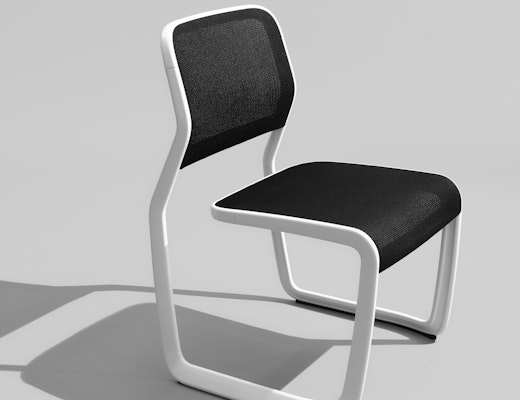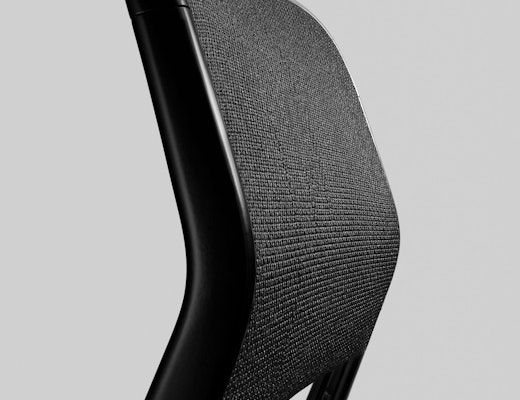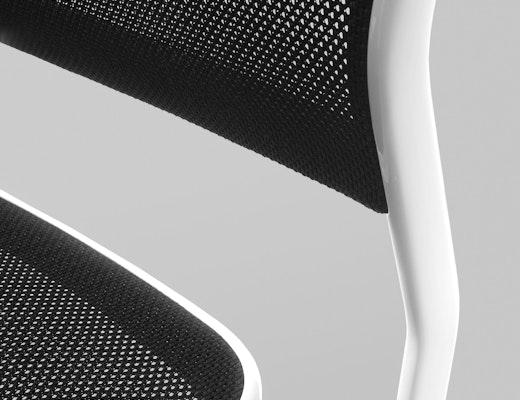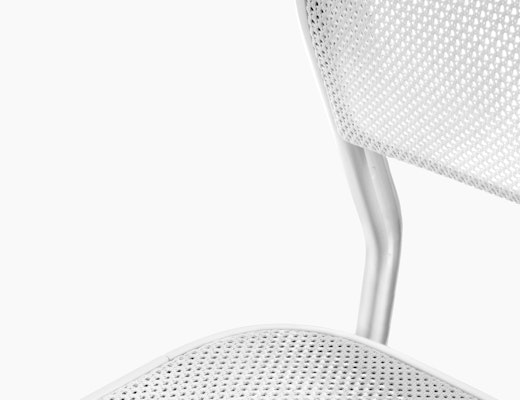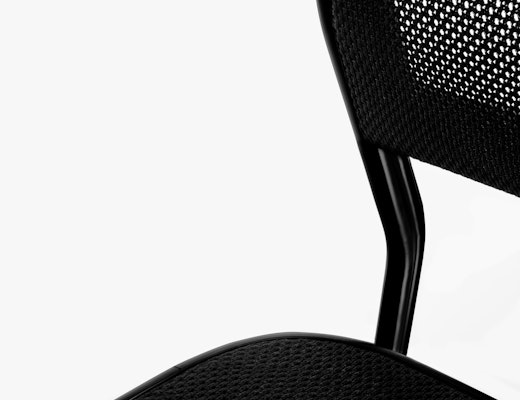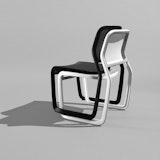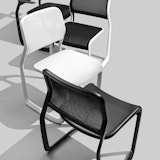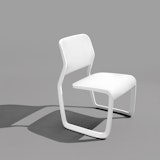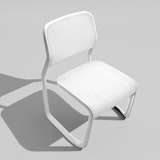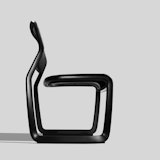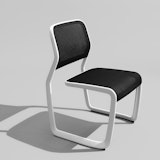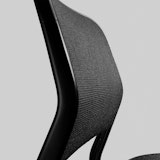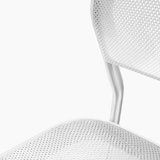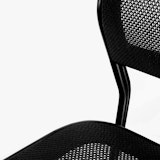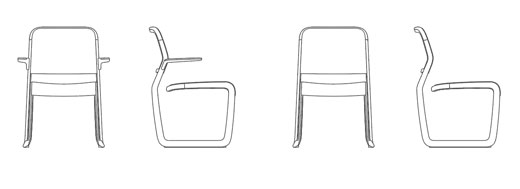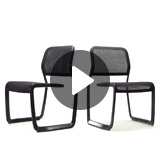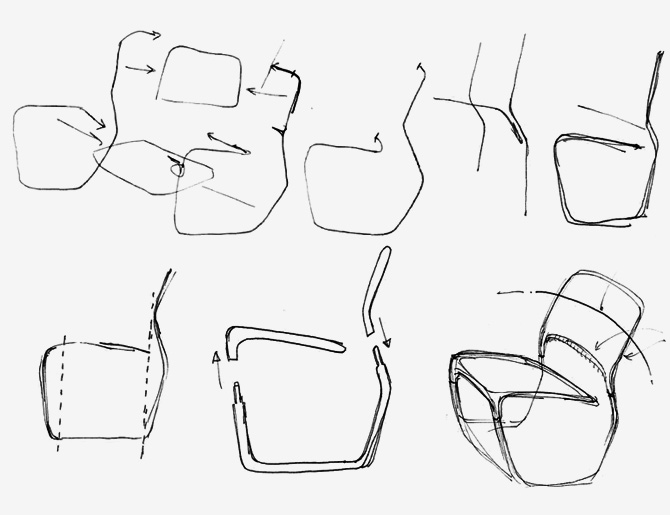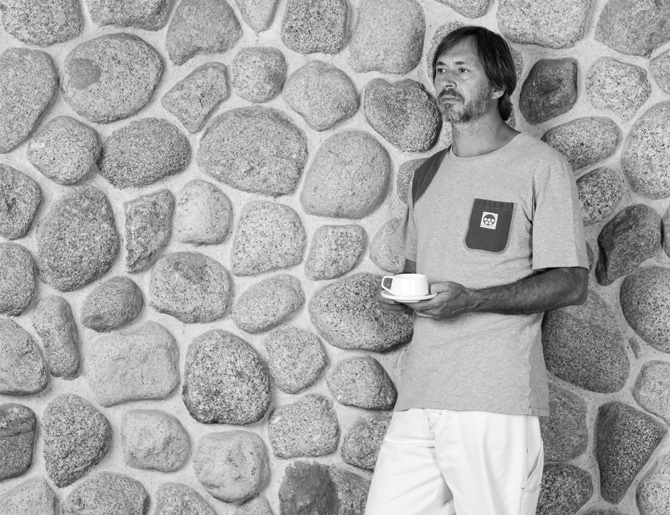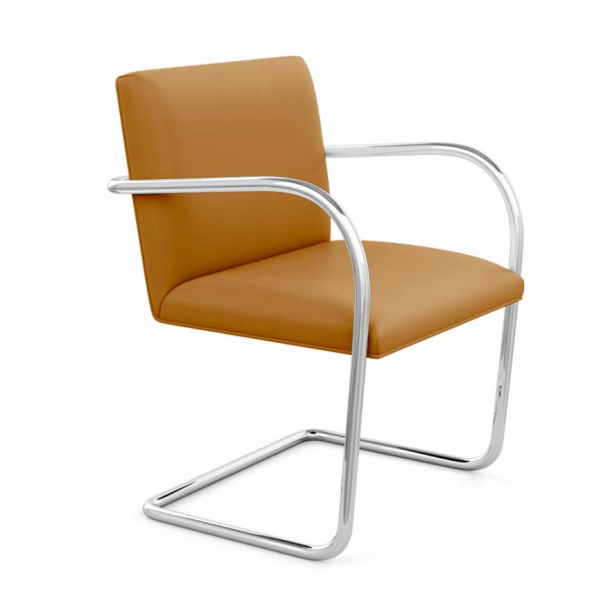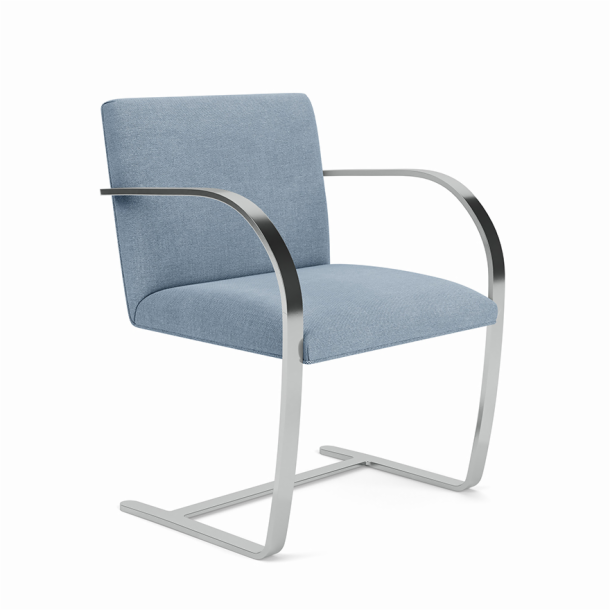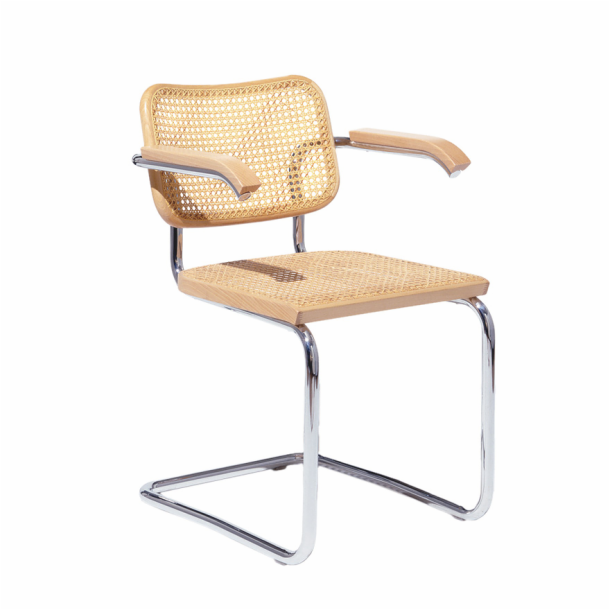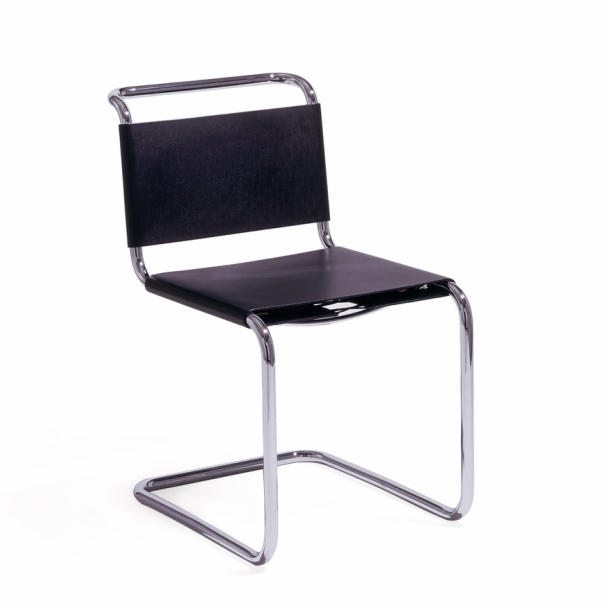Newson and Benjamin Pardo, Knoll Design Director, agreed that a new side chair for Knoll would honor the aesthetic principles that inform the existing portfolio of Knoll Seating, specifically the cantilevered designs.
Newson and Pardo revisited several Knoll designs, starting with Mies van der Rohe’s Brno Chair. While the Brno Chair served as a catalyst for the exploration, it was ultimately the 1928 Tugendhat Chair that most inspired Newson’s final design. Pardo explained, “Newson’s Aluminum Chair really pays tribute to Mies’s Tugendhat Chair, employing a similar reverse cantilever. This reverse cantilever evokes a visual weightlessness and renders an incredibly simple profile, where the seat floats effortlessly and is joined to the back via the legs of the chair.”
“We wanted to reimagine the tubular steel construction revolutionized at the Bauhaus–which is transitively tied to Knoll–with Newson’s unique ability to imagine organic, almost futuristic shapes,” Pardo recalled.
With this in mind, Newson forwent tubular steel in favor of cast aluminum, a material he felt allowed for a more dynamic form. The chair consists of three high-pressure castings–a main frame and two end caps–which connect to create a remarkably simple, yet structurally sound frame. To Newson’s liking, the complexity of the engineering is made invisible through mechanical precision and streamlined design.

















